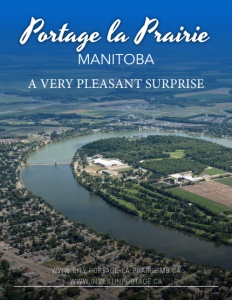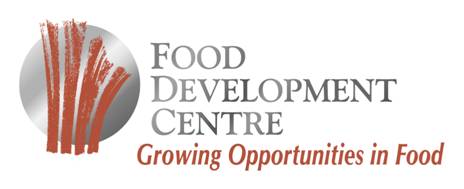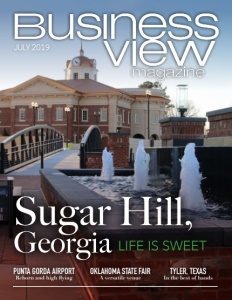Portage la Prairie, Manitoba
A very pleasant surprise
Business View Magazine interviews Vern May, Exec. Director Portage la Prairie Regional Economic Development, for our focus on Sustainability in Canadian Cities.
For a small city in the central plains region of Manitoba, Portage la Prairie is making massive strides in the realm of industrial development and future-proofing its economy for the next generation. Strategically located a mere 47 miles west of Winnipeg along the Trans-Canada Highway, its name was derived from the French word “portage” – meaning to carry a canoe overland between waterways. In this case, between the Assiniboine River and Lake Manitoba; two natural beauties that, today, accentuate the enjoyment derived from living and business building in this surprising community.
Portage la Prairie has recently been reaping the benefits of massive investments in large industrial – $1.2 billion in just over two years. For a community of 13,000, that’s hugely significant. In fact, it’s the largest period of investment in the history of the city. Recently, Business View Magazine spoke with Vern May, Executive Director, Portage la Prairie Regional Economic Development, about the reasons behind this amazing industrial growth, and other economic initiatives at play. The following is an edited transcript of that conversation.

BVM: What factors contributed to this huge investment by industry?
May: “The first investment came in January 2017 from a company out of France, called Roquette that deals in plant-based protein. You may be familiar with the “beyond meat burger” – this company provides the pea protein that goes into that product. When they’ve completed their development it will be the largest pea protein facility in the world. They chose Portage partly because of the available land, plus, Manitoba has the lowest hydroelectricity rate in North America. We were down to the final two cities and almost lost the deal to another location. What really swayed it was that our power source is primarily hydroelectric – a renewable green energy source versus coal-based power in their other site. Given we’re dealing with a food product and concerns around stewardship and food security, it made Portage very attractive.
“That was a $400 million project. Because we had requirements to upgrade the municipal infrastructure for capacity for wastewater and nutrient removal water before it goes back into the system, the J.R. Simplot company out of Idaho began looking at expanding their plant. They’ve been in Portage la Prairie since 2003 and were considering an expansion in our city, or a greenfield development in Washington State. When they saw all the infrastructure taking place and the upgrades to roads directly adjacent to their property, it made it a timely investment for them to expand here. So, they announced a $460 million expansion of their plant in February 2018. Combined, that’s almost $1 billion, just with those two companies; and the creation of roughly 300 new jobs.”
BVM: What other economic benefits has the resurgence brought?
May: “It has spurred a lot of active interest in housing development. At the present time, we have housing projects underway at various stages of development for the creation of 500 new rental suites – that’s apartments and townhouses. And once you’ve got the industry coming, and the jobs, and the housing underway, then we’re seeing the net result, which is the commercial interest. So, we now have major franchises here – including Booster Juice, which opened this spring; a Popeye’s Louisiana Kitchen under construction; and a new western Canadian franchise, MR MIKES Steakhouse is under construction and should be open later this year.
“Until 2017, Portage la Prairie hadn’t seen development since 2003. Before that, the big change in our situation was a downturn in 1991 when the Canadian air force base closed. And then the Campbell’s Soup plant closed. So, it has taken a bit for the city, particularly, people who’ve lived here there whole life, to grasp what’s happening. Some were skeptical that the interest would cool off, but it hasn’t. As a result of those developments, we now have Overton Environmental Enterprises, owned by Dale Overton, doing a 60-acre organic compost facility to support these industries we have. Most recently, we’ve signed a deal with Carpere. They are Vancouver-based industrial park developers looking to do industrial agri-food development.

“When their plan comes to fruition, they’ll have created Portage la Prairie as a center of excellence in agri-food manufacturing. It’s almost like augmenting our economic development team with a motivated agency that has an interest in seeing development take place. They’ll be reaching out to their network of international business contacts to consider expansion of their operations and portfolio into Canada, and Portage la Prairie. So, it’s a very exciting relationship.”
BVM: Is the population increasing along with the business growth?
May: “We expect by the time we get to the next census, a year from now, that we will see a major jump. We’re seeing a lot of inbound international immigration through the Provincial Nominee Program (PNP), which is recruiting skilled labor and professional trades from overseas to immigrate to Canada. A lot of those people are coming to Portage la Prairie on the Economic Stream Visa, which means within 18 months of arrival they are required to open a business that creates work and, especially, jobs for themselves.
“It’s not passive investment, like buying an apartment building and managing it from elsewhere in the world, they’re buying corner grocery stores and gas stations and becoming active in the community. With all the industry and subsequent new businesses, we’re now at 500 new jobs created. In the next 10 years, this relationship with Carpere looks to create another 500. And those are very preliminary numbers. We’re heavily immersed in strategic planning, right now. By the time all those jobs come online, the homes will be here, as well.”
BVM: Are agriculture and food manufacturing the main drivers?
May: “Yes. We’re in a really good spot here in terms of vegetable production, wheat, canola, oats, yellow peas; potatoes is huge because we have Simplot and McCain that both use tons of those. In fact, when Simplot finishes their expansion by the fourth quarter of 2019, Portage la Prairie will be the French fry capital of Canada.
“The Manitoba Food Development Centre is also in our community. It’s provincially funded through the Dept. of Agriculture and is a huge asset. Entrepreneurs and small-scale operators can lease space from the Centre and do their production lines on a schedule basis; or move in and have a lease in the facility until they’re at a point where they have enough operation happening to build and develop their own site. It’s fantastic. Even for research, if someone is launching their own brand of salsa, for example, they can work with the food scientists at the Centre to commercialize that home recipe. They deal with everything from the food product, itself, to packaging and design for quality assurance and freshness.
“People think of the prairies as being farmland, but one of the surprising things about Portage la Prairie is that we’re very close to Lake Manitoba, so there’s a huge opportunity for commercial fisheries within 16 miles. In other good news, the closure of the military air base in the ‘90s has become a huge attribute for us because a non-profit organization has come in from the private sector to manage and develop that property. Southport Aerospace and Properties have contract flight training for the military happening there, and now we have a Transport Canada certified airstrip and opportunities to do partnerships with the private sector around inbound and outbound flights. So, companies that are headquartered in the U.S. can fly their executive team directly into Portage la Prairie, visit their operations here, and fly out. It also lets us explore manufacturing opportunities in aerospace.”
BVM: What else makes Portage la Prairie a special place?
May: “We have an island on Oxbow Lake in the middle of the city that has an 18-hole golf course, a twin arena, indoor and outdoor water parks, tennis courts, a disc-golf course, walking and cycling trails, and the site for the Portage la Prairie Exhibition with all the agricultural displays and the fair that takes place there. Island Park is the jewel of the city – we’ve now made it central to our brand, as ‘Island on the Prairies,’ and it’s exciting to see the public and the business sector embrace that. And the city has started an $8.2 million project to replace the 100-year-old bridge to the island with a modern three-lane road and traffic circles at each end that can adapt traffic based on flow.
“A little known fact: Portage la Prairie gets the most sunny days in all of Canada. So, there are many opportunities for growth around solar energy and geothermal and exploration of renewable energies. Of course, organic composting is also allowing diversion of more food waste and household waste from the landfill that can be used as a carbon source to evergreen compost and fertilizer. As a rural community, environmental issues are very important here.
“The big challenge for a lot of us in Canada is the M-T-V phenomenon – Montreal, Toronto, Vancouver. Internationally, that’s been the full awareness that people have of our country. But now, when domestic and international investors are taking a look around, they’re starting to see Manitoba and what we can do in agriculture. And the attractive price of land and infrastructure considerations are making Portage la Prairie a very pleasant surprise.”
AT A GLANCE
WHO: Portage la Prairie, Manitoba
WHAT: A growing city of 13,000
WHERE: South central Manitoba
WEBSITE: www.city.portage-la-prairie.mb.ca / www.investinportage.ca
PREFERRED VENDORS
Food Development Centre – www.manitoba.ca/fdc
The Food Development Centre can help your business take new food products to market. The Food Development Centre (FDC) is an internationally recognized leader in the development and commercialization of food products for domestic and international markets.
In our 40-year history, our food scientists, engineers and technologists have helped companies of all sizes to successfully create and commercialize new products.
The Food Development Centre’s expertise includes formulating and testing new products, developing new processes, creating new protein ingredients, improving and expanding existing product lines, finding new uses for products and by-products, nutritional labelling, regulatory assistance, food safety training, and technology transfer.
The Food Development Centre has expertise in protein products. We can help extract protein from various commodities, create innovative product applications for customers, turn co-products into high value foods.
The Food Development Centre has incubator space available on a daily or long-term basis to meet your company’s needs.
If you have a product idea, please contact us. The initial consultation with our team is free.



